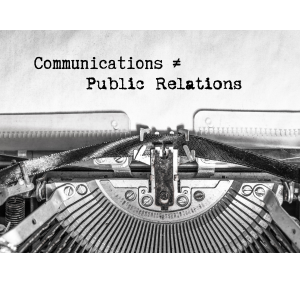Below is Part 2 of a 3-part series on Communications for MSPs,. In these posts, I share how MSPs should operationalize Communications, starting with how and when to hire communications professionals, followed by discussing the focus areas, strategies and KPIs for MSP Comms teams and finishing up with Communications best practices for the MSP market.
Part 2 – Focus areas and KPIs for a MSP’s Comms team

Managed Service Providers (MSPs) have different communication needs than a typical B2B or purely SaaS organization. MSPs – as the name suggests – provide services (and sometimes products), so the communications emphasis needs to be on the customer and as well as the employee experience, since delivering great service requires well informed, engaged, and happy employees.
MSPs are also in a highly competitive and quick-response environment so solid communications will ensure teams and technology are deployed quickly and effectively, avoiding incidents that could seriously damage both an MSP and its customers.
Where should an MSP Comms team focus their energy and efforts?
For any business, I think about Communications is responsible and working for three core areas: Customer, Internal, and Reputation. The balance of resources and programs across those three areas is what changes depending on the specific business’s variables and goals.
For MSPs, the balance should be around the following: 50% customer, 30% internal, 20% Reputation.
Here’s a high level view of the types of strategic initiatives or goals associated with each area:
- Customer: Support, feedback, appreciation, education, incident response
- Internal: Education and development, productivity, happiness, community, remove friction/create more certainty
- Reputation: Speed, security, business benefits
What Key Performance Indicators (KPIs) should a MSP Comms team use?
An organization’s size, complexity, maturity, tech stack, etc will have an impact on what KPIs are possible to measure in a way that isn’t overly time-consuming or expensive. That said, below are some KPI/metric examples that work generally well for seeing how a communications strategy is working to advance business goals.
Important: Leadership buy-in is important at the start of any KPI discussion for comms, so everyone is clear on expectations and desired outcomes. From there, gather the historical data to determine the benchmarks, reasonable goals, and growth targets, and time period to see results. If you’re starting fresh, allocate 3-6 months for benchmarking new KPIs, with the understanding that some comms programs will take longer to measure.
- Customer: Primary goal is customer happiness and engagement that supports retention, expansion, and referrals.
- KPIs and metrics: CSAT, NPS, Customer Effort Score, Advisory Council participation, survey participation, product utilization, support self service/ ticket complexity increases,
- KPIs and metrics: CSAT, NPS, Customer Effort Score, Advisory Council participation, survey participation, product utilization, support self service/ ticket complexity increases,
- Internal: Primary goals are employee productivity and high performer retention
- KPIs and metrics: Productivity, employee NPS, happiness/loyalty survey metrics, attrition, review sentiment, participation/consumption of content, performance review lift across departments
- KPIs and metrics: Productivity, employee NPS, happiness/loyalty survey metrics, attrition, review sentiment, participation/consumption of content, performance review lift across departments
- Reputation: Primary KPI is brand recognition with a positive sentiment
- KPIs and metrics: Engaged audience % with content on social, organic and direct web traffic, organic search, share of voice, media coverage, target audience reach, review volume and sentiment, etc.
There is a lot packed in here and I could talk all day long about communications, so if you need some help, want more information to help your organization or want to work together, let’s connect.





Leave a Reply